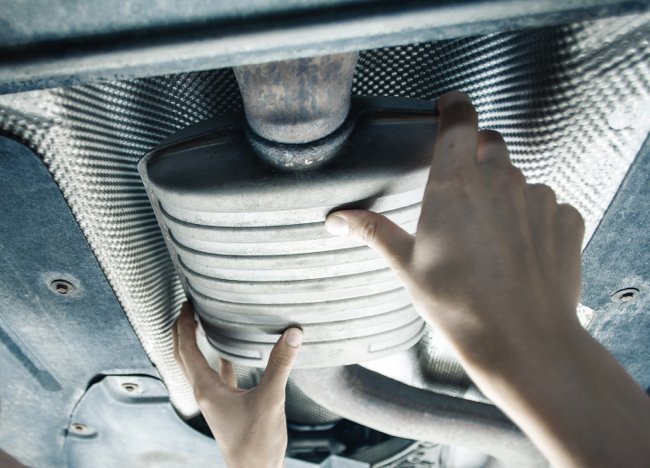Installing an exhaust system can significantly enhance your vehicle’s performance and sound. Knowing how to install an exhaust system properly is crucial for achieving the best results. This article provides a comprehensive guide on installing an exhaust system, including essential tools, preparation steps, and detailed instructions to ensure a successful installation.

Why Install an Exhaust System?
Firstly, understanding why you might want to install an exhaust system helps clarify its benefits. Upgrading your exhaust system can improve engine performance by reducing backpressure and enhancing exhaust flow. Additionally, a new exhaust system can alter your vehicle’s sound, giving it a more aggressive or refined tone. By learning how to install an exhaust system, you can achieve these improvements and enhance your driving experience.
Tools and Materials Needed
Essential Tools
To start with, you’ll need a few essential tools for installing an exhaust system. These include:
- Socket Set: For removing and tightening bolts.
- Wrenches: For loosening and securing fasteners.
- Jack and Jack Stands: To lift and support your vehicle safely.
- Rubber Gaskets: To ensure a tight seal between exhaust components.
- Penetrating Oil: To loosen rusted bolts and nuts.
Having these tools ready will make the installation process smoother and more efficient.
Materials
In addition to tools, gather the necessary materials:
- New Exhaust System: Ensure it’s compatible with your vehicle’s make and model.
- Clamps and Hangers: For securing the exhaust components in place.
- Anti-Seize Lubricant: To prevent rust and facilitate easier future removal.
With these tools and materials on hand, you’re ready to proceed with the installation.
Step-by-Step Installation Process
1. Prepare the Vehicle
Firstly, ensure your vehicle is parked on a level surface. Use the jack to lift the car and place it securely on jack stands. This provides adequate clearance to work underneath. Next, remove any existing exhaust components if necessary. This involves loosening and removing the old muffler, pipes, and hangers.
2. Position the New Exhaust System
Once the old system is removed, position the new exhaust system under the vehicle. Begin by aligning the new exhaust components with the existing mounting points. It’s helpful to loosely fit the components together to check the alignment before fully securing them. Ensure that the exhaust system is correctly positioned and that all hangers and brackets align properly.
3. Install the New Exhaust Components
Next, start installing the new exhaust components. Begin by attaching the pipes and mufflers, using the provided clamps and hangers. Tighten the bolts and clamps securely but avoid over-tightening, which can damage the components. Install rubber gaskets between the connections to prevent leaks and ensure a tight seal.
4. Check Alignment and Clearance
After installing the components, check the alignment and clearance of the exhaust system. Ensure that the exhaust pipes do not come into contact with any parts of the vehicle or undercarriage. Adjust the hangers and brackets as needed to achieve proper alignment and clearance. This step is crucial to avoid vibrations and rattling noises during operation.
5. Lower the Vehicle and Test
Once you’ve confirmed that the exhaust system is correctly aligned and secured, lower the vehicle carefully from the jack stands. Start the engine and listen for any unusual noises or leaks. Check all connections for leaks by feeling for escaping exhaust gases or listening for hissing sounds. If any issues are detected, re-tighten clamps and bolts or adjust the components as needed.
Final Adjustments
Finally, make any necessary adjustments to ensure optimal performance. If the exhaust system includes adjustable components, such as tips or resonators, fine-tune these to achieve your desired sound and appearance. Periodically check the exhaust system for any signs of wear or loose connections, and perform maintenance as required.
Conclusion
In summary, learning how to install an exhaust system involves careful preparation, proper tool usage, and precise installation techniques. By following these steps, you can successfully upgrade your vehicle’s exhaust system, enhancing both its performance and sound. Ensure that you use the correct tools and materials, follow each step diligently, and make final adjustments to achieve the best results. With a well-installed exhaust system, you’ll enjoy improved engine efficiency and a more enjoyable driving experience.




